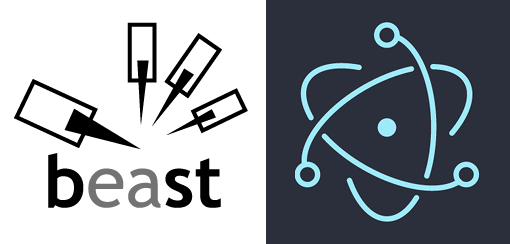We have just released Beast version 0.11.0: Beast 0.11.0 Announcement
The announcement gives a high level overview of the changes (Soundfont support, multi threaded signal processing, new packaging, etc) and links to all the details like NEWS, tarballs, the binary package and shortlogs.
In this post, I’d like to extend a bit on where we’re going next. Beast has come a long way from its first lines of code drafted in 1996 and has seen long periods of inactivity due to numerous personal reasons on my part and also Stefan’s. I can’t begin to describe how much the Beast project owes to Stefan’s involvement, development really thrives whenever he manages to put some weight behind the project. He’s initiated major shifts in the project, contributed lots of demos, instruments and of course code.
Lately we were able to devote some time to Beast again, and with that reformulated its future directions. One important change was packaging, which already made it into the 0.11.0 release. This allows us to provide an easily installable binary package that extracts into /opt/. It’s available as a DEB for now, and we hope other package formats will follow.
Another major area of change that I’m working on behind the scenes is the UI technology. The current UI has huge deficits and lacks in workflow optimizations compared to other DAWs. Stefan has several big improvements planned for the workflow as do I, but in the past Gtk+ has not been helping with making those changes easy. Rapicorn was one attempt at fixing that, and while in theory it can provide a lot more flexibility in shaping the UI, based on concise declarations and use of SVG elements, it is still far away from reaching the degree of flexibility needed for our plans.
So far indeed, that I’ve had to seriously reconsider the approach and look for alternatives. Incidentally, the vast majority of feature needs and ideas I’ve had for the toolkit area appear to already be readily accessible through web technologies that have impressively advanced in the last few years.
Though we’re not planning to move Beast into an online application, we can still leverage these technologies through the electron project, which is an open source project providing HTML & CSS rendering plus Javascript on the desktop using libchromiumcontent from Google Chrome.
In my eyes it makes little sense to replicate much of the W3C specified features in desktop toolkits like Gtk+, Qt, Rapicorn which are much lesser staffed than the major browser projects, especially if we have a way to utilize recent browser improvements on the desktop.
So in effect I’ve changed plans for Beast’s future UI technology and started to construct a new interface based on web technologies running in electron. It’s interesting to change desktop UI development like this to say the least, and I’m curious about how long it takes to get up to par with current Gtk+ Beast functionality. I have some ideas how to address real time display of volume and frequency meters, but I’m still unsure how to best tackle large track view / clip view displays with wide scrolling and zooming ranges, given the choice between DOM elements and an HTML5 canvas.
Apart from the UI, we have several sound Library improvements pending integration. Stefan wants to finally complete Jack driver support, and as always there are some interesting plugin implementations in the queue that are awaiting completion.
If you want to help with any of the development steps outlined or just track Beast’s evolution, you can join our mailing list. Although the occasional face to face meeting helps us with setting development directions, we’re doing our best with keeping everything documented and open for discussions on the list.
UPDATE: Stefan just released his first Beast screencast: Walkthrough: making music with BEAST 0.11.0
